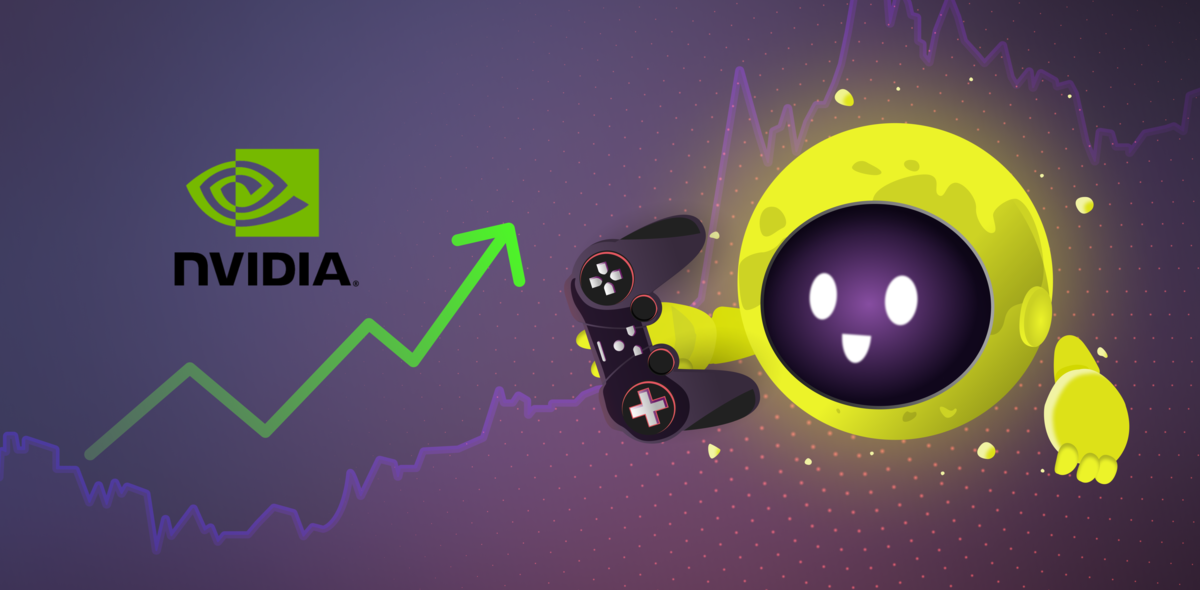
The events of 2022 gave a good shake to the crypto community — nevertheless, the "crypto winter" generally is considered complete by many. Already in the first quarter of 2023, Bitcoin began to return positions and continues to show moderate growth, and the peak of the next cycle of its price rise is expected for 2025. In this article, we will consider what factors promote "warming" in the cryptocurrency market, and what opinions on this matter are present among this area experts.
How Will The Creation Of A Bitcoin ETF Affect The Market?
The ETF stands for Exchange Traded Fund and is a recently appeared exchange-traded instrument on the cryptocurrency market that allows exchange traders to operate several investment securities like a mutual fund. The fund may include shares or stakes of various companies, various currency instruments, or commodities that have certain characteristics. This allows investors to analyze markets, obtain leverage, and exclude short-term capital gains taxes.
ETFs are rapidly gaining popularity in the cryptocurrency market because they are:
- Much more flexible - the number of shares in the ETF basket can change daily.
- Easy to trade - ETFs can be bought and sold at any time of the day, while mutual funds can only trade at the end of the day.
- Transparent - ETFs must disclose their assets on a daily basis.
- Tax efficient - compared to actively managed mutual funds, ETFs have a lower capital gains tax, which is only paid when ETFs are sold.
- Cheaper - investors don't have to buy all the shares for their ETF portfolio. Instead, they can buy several shares of various companies that are placed in ETFs. Using ETFs, investors can also save on brokerage fees with fewer ETF deals. As a result, the costs of operating and managing ETFs are much lower than buying individual shares.
Despite the relatively recent emergence of ETFs, a significant number of such funds already exist on the market.
The analytic company Fundstrat has done research to assess the possible development of the value of Bitcoin, and the result cannot but rejoice. The cost of Bitcoin (BTC) may grow by 521% from current values and reach $180,000 before halving, scheduled for April 2024. This was stated by Tom Lee, the co-founder of Fundstrat.
According to analysts at the research company, the daily demand for Bitcoin is currently about $25 million, which is equivalent to a daily mining reward of about $25 million, but if the Bitcoin ETF is launched, the situation may change.
According to Fundstrat experts, Bitcoin funds can increase daily demand for BTC by $100 million. Such an increase, along with halving in April 2024, which will reduce the daily remuneration for mining to $12 million, means that the price of Bitcoin should increase significantly.
"This (Bitcoin ETF launch) would bring daily demand to $125 million, while daily supply is only $25 million. The implied equilibrium price would need to rise so daily supply matches daily demand. Equilibrium analysis suggests that a clearing price is $140,000 to $180,000, before the April 2024 halvening," say Fundstrat analysts.
Many share the view that launching an ETF would raise the BTC to record highs. However, not everyone is enthusiastic about this. Some cryptanalysts are more likely to attribute the price increase to the potential approval of current applications, which may coincide with halving, which can bring new participants and funds to the market.
The opposite opinion of the excitement associated with the expectations of launching a spot ETF for Bitcoin is a purely manipulative story. A positive news background is nothing more than that, the effect of which will not last long — only while the fund is being formed.
Skeptics explain their attitude by the fact that at the time of approval of the application, the fund will begin to form capital and buy Bitcoin for it on the spot market, which at the moment will greatly reduce supply on exchanges, which means it will contribute to price growth at the same level of demand among other investors. Also, some crypto analysts express warnings that before large purchases, large players are often able to create serious price reductions in the short term so that the average price of a single purchase of large volume remains at an acceptable level. Therefore, immediately after approval, you should be afraid of long squeezes.
Bitcoin Halving
One of the main reasons for the growth of the cryptocurrency sector is the approach of Bitcoin halving (reducing the speed of generating new cryptocurrency units), which will be held in April 2024. This process implies a twofold reduction in the production of new BTC units. The last halving took place in May 2020, after which in 2021 Bitcoin updated its historical maximum above $68,000.
Bitcoin's "bullish" cycles are closely related to halving, which occurs every few years, points out Du Jun, Huobi co-founder. "If we proceed from the past price cycles of the largest cryptocurrency, then a "bullish" cycle in BTC can be expected at the end of 2024 or the beginning of 2025. However, it is definitely difficult to predict due to many other factors, such as geopolitical uncertainty," he notes.
Some leaders of the cryptocurrency industry believe that by 2025 the cost of Bitcoin may exceed $100,000, writes Business Insider.
Experts came to this conclusion by analyzing the growth dynamics of BTC after halving, which in 3 previous cases led to a massive token rally.
According to the most conservative estimate, the token will cost $105,000 12 months after this event. If you look at history, trends suggest that Bitcoin is already on track to surpass record highs and reach $100,000 by 2025.
According to the original technical document, authored by Satoshi Nakamoto, the miners' remuneration will be reduced from 6.25 to 3.125 bitcoins per block. Each of the last 3 halvings correlated with new historical token highs throughout the year.
If Bitcoin remains at about $30,000 before this event, even a 12-month increase in its value after a 250% reduction will result in $105,000. A year after halving, in 2012, 2016, and 2020, the price of Bitcoin increased by 8069%, 284%, and 559%, respectively.
Market Regulation
Undoubtedly, the relationship between the government and the crypto sector has an impact on the market. We have already seen high-profile court cases between US regulators and crypto exchanges undermine and restore traders' trust in waves. Therefore, the resumption of the Bitcoin bull market requires clarity of regulation in the United States and a steady decline in core inflation. This is the conclusion reached by the analytical company Nansen.
Principal Research Analyst Aurelie Barthere noted in her report that the narratives of central banks and the market are changing: the recession scenario is being pushed back and "stubborn" inflation is coming to the fore.
"This creates non-linear effects, whereby monetary policy (outside of Asia) remains more restrictive for longer, and in turn, becomes an increasing headwind for risk assets," she wrote.
At the same time, a shallow sale of Bitcoin and a decrease in the implied volatility of cryptocurrency indicate that many regulatory and macroeconomic negative news are already taken into account in the price, the analyst said.
On June 10, the digital gold quotes fell to $26,000. This happened against the background of the SEC filing lawsuits against the leading Bitcoin exchanges Binance and Coinbase. The price moved to a recovery following the Fed's decision to maintain the base rate range.
On June 21, the course of the first cryptocurrency at the moment exceeded $29,000. Bitcoin tested this mark at the end of March. Industry influencers surveyed by CNBC in the same month showed a bullish attitude right up to the digital gold price of $100,000 before the end of the year.
Many experts come to the opinion that the direct regulation of the market will contribute to the bull run. For example, the co-founder and former head of the BTCC exchange, Bobby Lee, in an interview with CNBC, allowed the bull trend in the cryptocurrency market to return only by early 2025.
The expert believes that in order to restore confidence in the digital asset industry, it is necessary to strengthen the regulation of companies, especially those providing storage services. "I've always been in favor of more regulation on the cryptocurrency market. For understanding, I am talking about regulating companies, not the asset itself, because it is inert. It's the same commodity as gold and silver. No regulation can change the chemistry of gold or silver. So with Bitcoin," explained Bobby Lee.
Recall that MicroStrategy co-founder Michael Sailor predicted a multiple increase in Bitcoin due to regulation. In his view, the SEC's actions lay the groundwork for the next bullish phase.
"Regulatory clarity is going to drive #Bitcoin adoption by eliminating the confusion & anxiety that has been holding back institutional investors. Bitcoin dominance will continue to grow as the #Crypto industry rationalizes around $BTC and goes mainstream."
He noted that most of the SEC's claims relate to tokens that have the hallmarks of securities. In June, the regulator filed lawsuits against Binance and Coinbase exchanges, including among the charges an unregistered offer by platforms of such assets.
At the same time, the Commission classifies the first cryptocurrency as exchange-traded goods, considering it quite decentralized. Therefore, according to Sailor, regulatory measures against stablecoins and other tokens will return Bitcoin to market dominance with a share above 80%.
Bottom Line
As a result, we can observe the predominance of positive attitudes in crypto society. Bitcoin’s price watchers are on high alert, and some interesting developments await ahead but remember not to lose your head. One way or another, Bitcoin has once again confirmed its dominance in the market, and is not going to cede ground. If you still doubt that crypto summer has come, then at least spring is in full swing.




